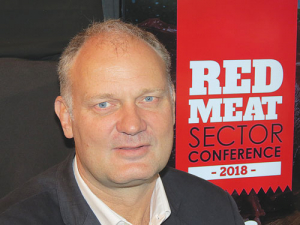Not long ago Simon Limmer was extolling the virtues of kiwifruit as chief operating officer of Zespri, now he's marketing red meat as chief executive of Silver Fern Farms.
This transition has been seamless, as Peter Burke reports.
Silver Fern Farms’ new chief executive has enjoyed his first few months with the red meat industry – in fact, more than he thought.
Simon Limmer says he feels privileged in the scope of the things he’s seen, the places he’s been and the people he’s met
“That’s been pretty cool. The number of moving parts in this meat industry is quite different from the Zespri experience,” he told Rural News.
“Zespri was focused on the sales and marketing in a unique way because it reached from the orchard right through to the market. But I guess here in the meat industry the processing component is so critical to how well you are going to perform as a business. But equally, the marketing and sales components are just as important to the value you are extracting from the market.”
But the common denominator of both industries is building relationships with producers, buyers and consumers, Limmer says. In the case of SFF it’s working with about 16,000 families who supply the company, “assuring them that we have a sustainable future as a company”.
Limmer says livestock procurement is critical to later capturing value in the market.
“There are 7000 people working in the processing plants and they are critical to the functionality of the business. It is difficult to attract and retain people into those plants and labour reform is shifting, so we have to have a good relationship with all those people as well,” he says.
Limmer sees many issues facing the industry and notes that it’s always had challenges. Issues centred on the environment are a challenge, but these are going to take the industry forward and they just have to navigate their way through change.
While kiwifruit and red meat are completely different products, Limmer sees many similarities in the marketing. In both cases, NZ is looking to establish strong relationships with consumers because both meat and kiwifruit are inherently high-value products.
“There is a niche in the red meat market that I believe NZ can fill and it can be very valuable for us,” he told Rural News.
“People eat because they have to and because they enjoy the experience. Our NZ grass-fed red meat has a huge range of natural attributes: it’s leaner, has better flavour and it has health attributes that other red meat producing countries don’t have. So we need to be telling that story.











